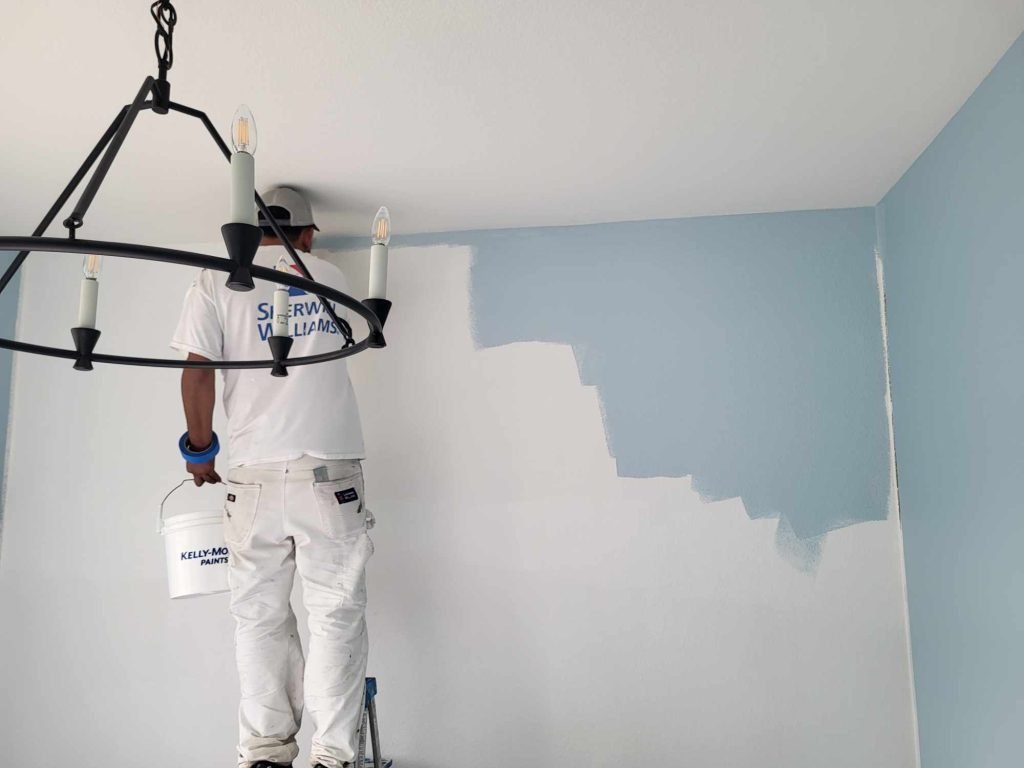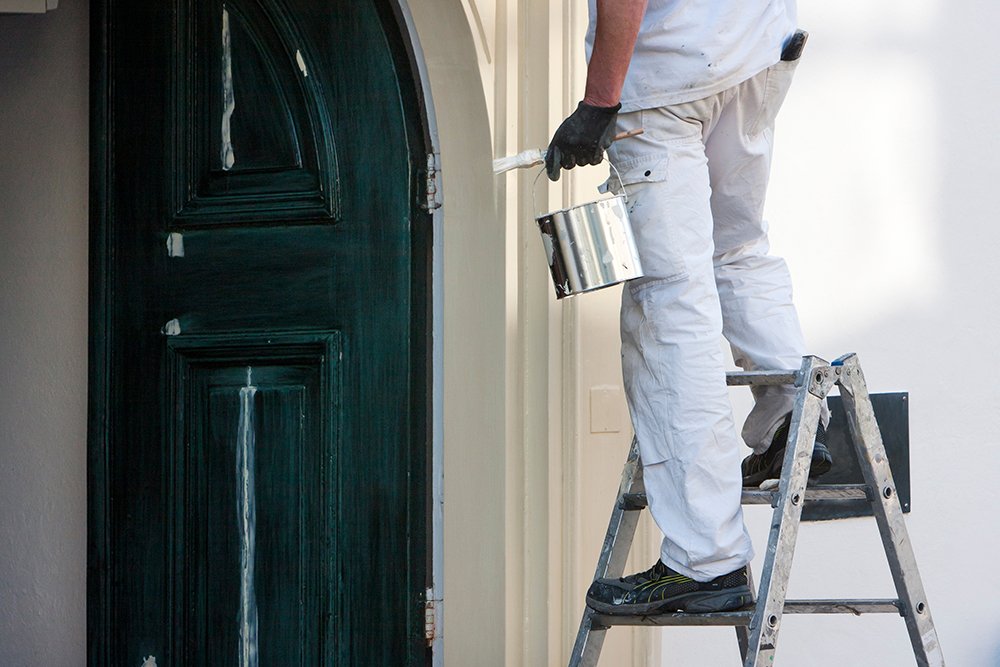When it comes to refreshing your home, the interior painting stands out as one of the most impactful techniques. The right approach to interior painting can transform any room from dull to vibrant, creating an inviting atmosphere that suits your style. Effective interior painting involves selecting the right colors and applying specific techniques to achieve a flawless finish.
Consider strategies like using light-reflective paints, employing high-quality brushes and rollers, and mastering proper prep work to brighten up your rooms. Each of these techniques contributes to a more polished and professional result, ensuring that your interior painting project enhances your home’s overall look and feel. By focusing on these methods, you can achieve a brighter, more engaging space.

Choosing the Right Paint Finish for Brightness
When selecting a paint finish for your interior painting project, the choice can significantly impact how light is reflected in a room. Glossy, semi-gloss, or high-gloss finishes are ideal for brightening spaces because they reflect more light than matte or eggshell finishes. This reflective quality helps to enhance the natural light coming into the room, making it feel more open and airy.
Additionally, glossy finishes are easier to clean, which is beneficial in high-traffic areas or spaces prone to splashes and spills. On the other hand, a matte finish can absorb light and make a room feel cozier, but it might not offer the same brightness. Ultimately, choosing a glossy or semi-gloss finish can maximize the brightness of your interior painting project.
How to Prepare Walls for a Perfect Interior Painting
Proper wall preparation is essential for a flawless interior painting job. Proper preparation ensures smooth application, even coverage, and a professional finish that will make your space look its best.
- Clean the Walls: Dust and grease can prevent paint from adhering well. Clean walls with mild detergent and water, then rinse and let them dry completely before painting.
- Fill Cracks and Holes: Use spackling compounds to fill in any imperfections. Apply it with a putty knife, smooth it out, and allow it to dry before sanding it smooth.
- Sand the Surface: Lightly sand the walls to create a smooth surface for the paint. This helps the new paint adhere better and removes any old paint that might cause uneven application.
- Apply Primer: Primer helps cover any stains and provides a uniform base for the paint. Apply it to all surfaces that will be painted to ensure better adhesion and color consistency.
- Tape-Off Areas: Use painter’s tape to mask off trim, edges, and adjacent surfaces. Press the tape firmly to prevent paint from seeping underneath and creating messy lines.
Selecting Color Palettes to Enhance Light in Rooms
Choosing the right color palette is crucial for enhancing light and brightness in your rooms. Light colors, such as whites, creams, and pastels, make a space feel larger and more open. These shades effectively reflect natural and artificial light, brightening the entire room. Additionally, consider incorporating soft, cool tones like light blues or greens, which can contribute to a serene and airy atmosphere.
Avoid dark or saturated colors if you want to brighten the space. They tend to absorb light and can make a room feel smaller and more enclosed. Combining light colors with strategic accents or trim in slightly darker shades can create a balanced and visually appealing look. Careful color selection ensures that your interior painting project achieves the desired brightness.
Tips for Applying Paint to Maximize Light Reflection
The way you apply paint matters to maximize light reflection and brighten your room. Follow these tips to achieve a well-lit, inviting space:
- Use Light-Reflective Paints: Opt for paints with high sheen levels, like semi-gloss or high-gloss, which reflect more light and make the room feel brighter and more spacious.
- Apply Even Coats: Ensure each coat of paint is applied evenly to avoid streaks or uneven patches, which can disrupt light reflection and impact the overall brightness.
- Paint in a “W” Pattern: Use a “W” pattern with your roller to cover the surface evenly and blend each section seamlessly, preventing visible lines and maximizing light reflection.
- Choose Light Colors: Choose light colors, such as whites or pastels, reflecting light more effectively than dark hues and contributing to a brighter, more open atmosphere.
- Use Primer: Apply a primer before you paint to create a smooth, even base that improves paint adhesion and ensures consistent light reflection throughout the room.
Using Primer Effectively in Interior Painting Projects
Using primer effectively in your interior painting project is not just a step, it’s a crucial part of the process. Primer prepares the surface for paint by creating a smooth, even base that enhances paint adhesion and coverage. It’s essential when transitioning from dark to light colors or painting over new drywall. The role of primer in creating a flawless finish cannot be overstated.
A high-quality primer also helps seal any stains or discolorations, ensuring they don’t bleed through the final coat of paint. For best results, apply a primer that matches the type of paint you’re using—oil-based primers for oil paints and latex primers for water-based paints. Correctly applying primer will improve the durability and appearance of your paint job and contribute to a brighter, more polished finish.
Best Tools and Equipment for a Smooth Finish
Choosing the right tools and equipment is not just crucial, it’s a game-changer for achieving a professional, polished finish in your interior painting project. High-quality brushes and rollers are not just essential, they are the backbone of your project. They ensure the paint is applied evenly and streaks or brush marks are avoided. Opt for synthetic brushes for water-based paints and natural bristle brushes for oil-based paints to ensure the best results.
A roller with a smooth nap is ideal for flat surfaces, while a textured roller can help with uneven areas. Use painter’s tape to create clean lines and protect areas you don’t want to paint. A paint tray with a liner can help manage paint more efficiently and reduce mess. Investing in the right tools ensures a more professional result and makes the painting process more efficient and enjoyable.
Techniques for Cutting In and Edging
Cutting in and edging are essential for a clean and professional paint job. Mastering these methods ensures sharp lines and prevents paint from bleeding onto adjacent surfaces.
- Use an Angled Brush: Opt for a high-quality angled brush for precision. It allows for control in tight corners and along edges, making it easier to paint with accuracy.
- Apply Painter’s Tape: Place painter’s tape along the trim and adjacent walls to prevent paint from bleeding. Press the tape down firmly to avoid gaps and ensure crisp lines.
- Work in Sections: Paint edges in manageable sections. This technique prevents paint from drying before you blend, ensuring seamless transitions and avoiding noticeable lines.
- Remove Tape While Wet: Remove the painter’s tape while the paint is still slightly wet. This helps to achieve clean, sharp lines and reduces the risk of peeling paint.
- Touch Up as Needed: After removing the tape, inspect for any imperfections. Use a small brush to touch up areas where paint may have bled, or edges need refining.
Achieving Consistent Coverage and Avoiding Stripes
Achieving consistent coverage and avoiding stripes is key to a professional-looking paint job. Start using a high-quality roller and well-mixed paint to ensure uniform color application. When rolling, use a “W” pattern to spread paint evenly across the surface, overlapping each section to avoid visible lines. Apply the paint in sections, working while the paint is still wet to blend edges seamlessly.
Avoid overloading the roller with paint, leading to drips and uneven coverage. If you notice stripes or roller marks, lightly sand the area once the paint is dry and apply a touch-up coat. Consistent application and proper technique will help you achieve a smooth, streak-free finish in your interior painting project.
Maintaining Clean Lines and Avoiding Smudges
Maintaining clean lines and avoiding smudges is crucial for a polished look in your interior painting project. Use painter’s tape along edges, trim, and adjacent surfaces to prevent paint from bleeding and creating messy lines. Ensure the tape is applied smoothly and firmly to avoid gaps. For clean lines, start painting away from the edges and move towards them, using a steady hand and avoiding excessive paint buildup.
If you accidentally smudge or get paint on unintended areas, clean it up quickly with a damp cloth or sponge before it dries. For the best results, touch up any areas that require additional attention after removing the tape. These techniques will help you achieve crisp, professional edges and a flawless finish.
How to Incorporate Accent Walls for Added Brightness
Incorporating accent walls into your interior painting project can add brightness and visual interest to a room. Choose a light, complementary color for the accent wall to contrast with the surrounding walls and draw attention. Accent walls are often placed behind focal points, such as fireplaces or headboards, to create a dramatic effect.
To achieve a clean look, use painter’s tape to define the edges of the accent wall, ensuring sharp lines and preventing paint from smudging onto adjacent walls. Consider using a slightly different finish on the accent wall to enhance its impact and reflect more light. By carefully selecting and painting an accent wall, you can brighten your space and add a unique touch to your interior design.
Applying the best techniques for interior painting can make a remarkable difference in brightening your rooms. From choosing the right paint finish to using practical tools and methods, these strategies ensure a professional and luminous result. By selecting light-reflective colors and maintaining clean lines, you create an inviting and well-lit space that enhances your home’s overall ambiance.
Ready to transform your space with a bright new look? Contact Full Coverage Painting for expert interior painting services. Located at 600 Buckeye St., Vacaville, CA 95688, we’re here to help. Call or text us at 707-384-5108 to schedule your consultation today!







